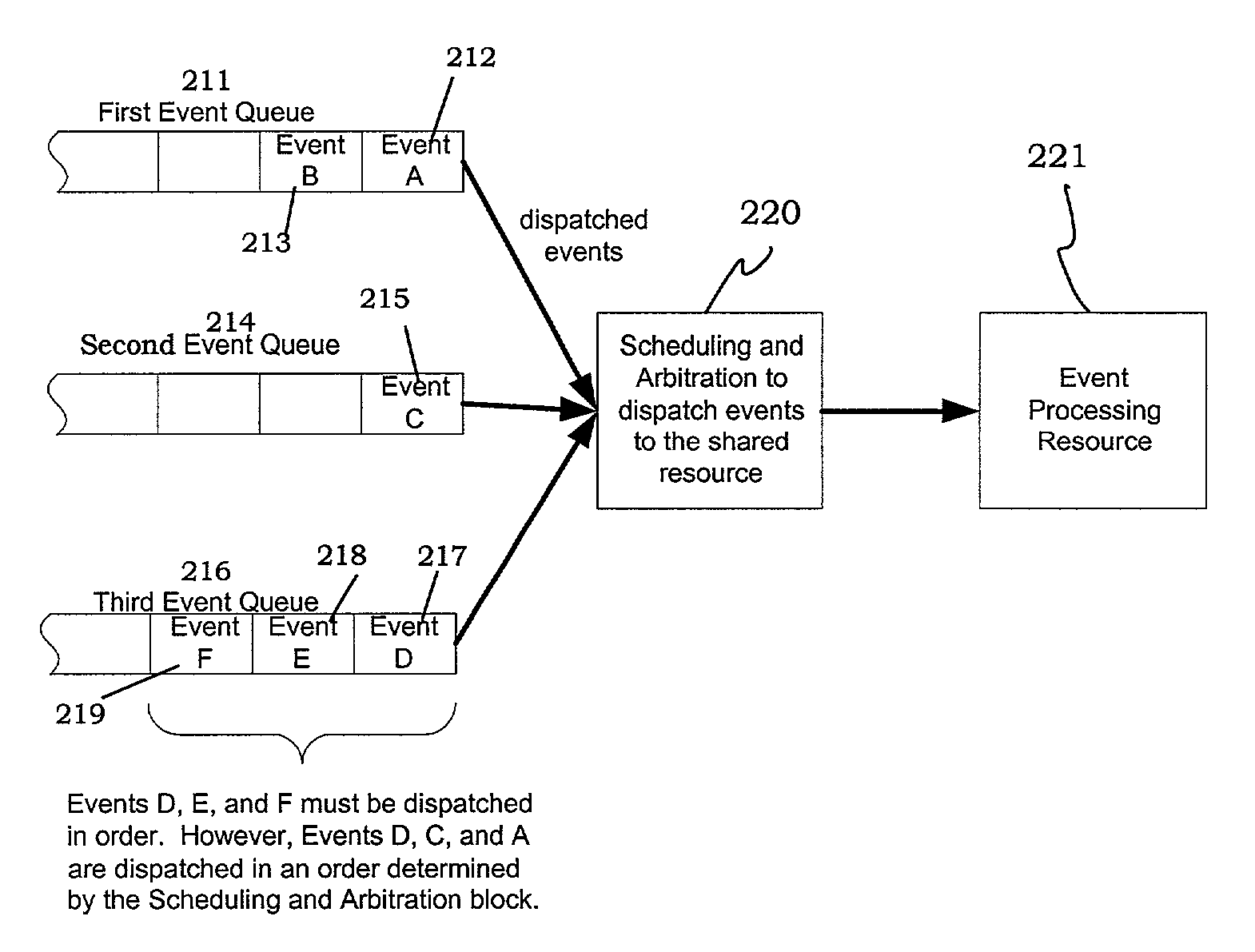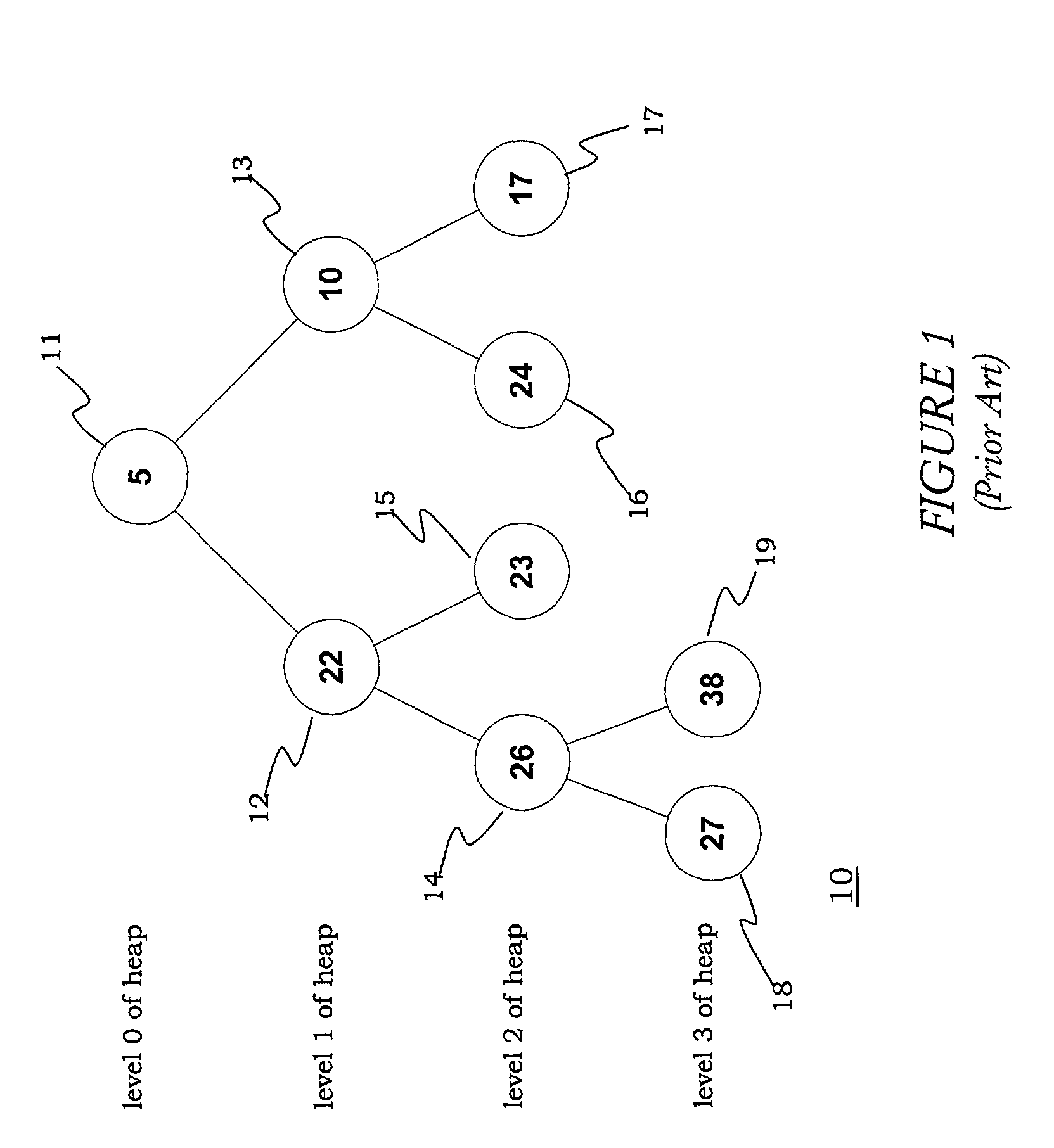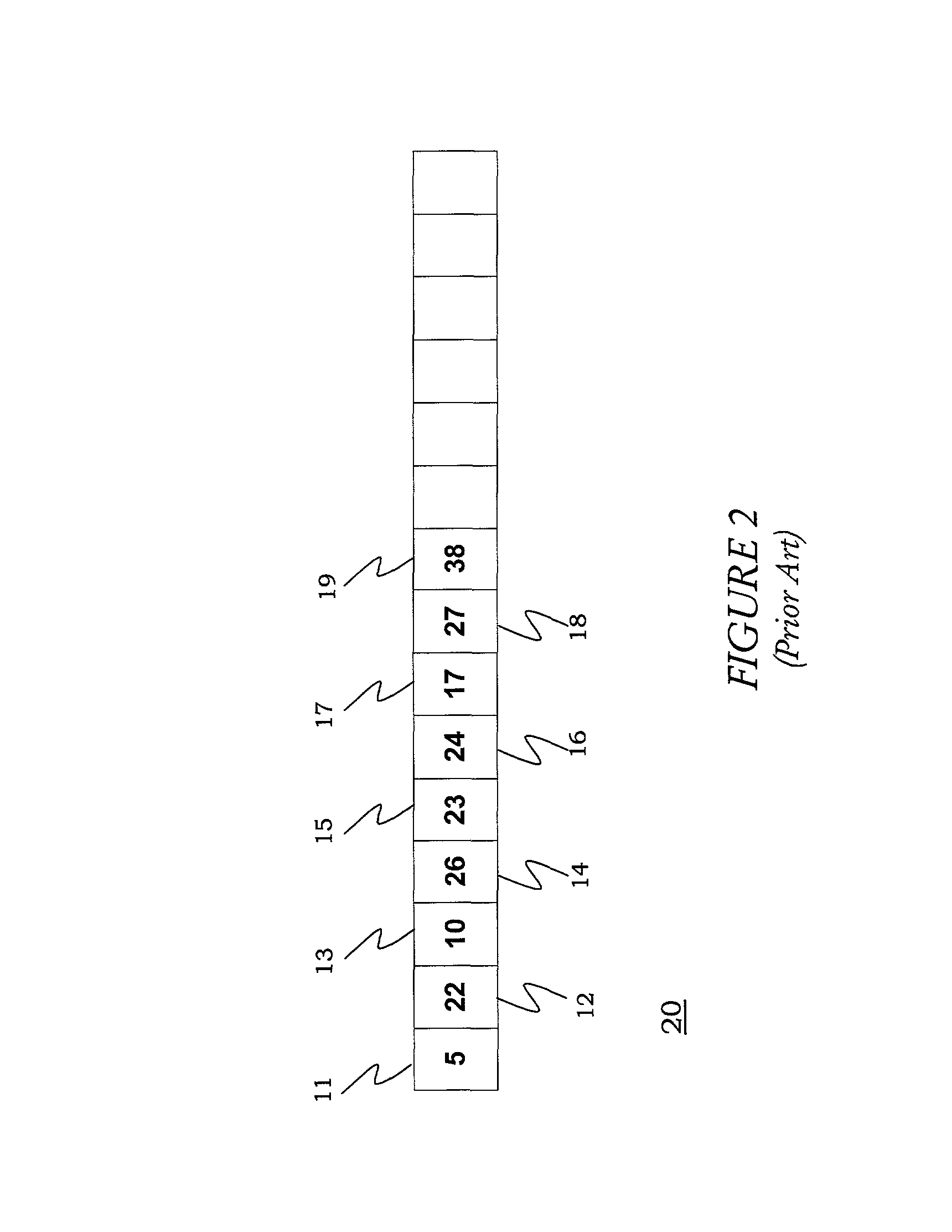Because the percolate operations for remove and for insert
traverse the
data structure in different directions, parallelism and pipelining of the heap
algorithm are inefficient and difficult, respectively.
Efficient pipelined heaps cannot be implemented due to opposing percolate operations.
I.e., if stage Sj is currently
processing operation i, stage Sj-1 is currently
processing operation i+1, stage Sj-2 is currently
processing operation i+2, and so on.However, since some operations flow through the heap in one direction (e.g.,
insertion), whereas other operations flow though the heap in the other direction (e.g., removal), an efficient pipeline that supports a mix of the two operations is difficult to construct.
Pipelined implementations of heaps are difficult to construct in high-speed applications due to the specifics of the “remove & percolate” operation.The operation that removes values from a heap in sorted order leaves a “hole” in the root node once the highest priority value has been removed.
A conventional design may not be fully pipelined.
That is, since there is only one “comparing and
rewriting control circuit,” and since this circuit is required for every parent-child comparison in a percolate operation, it is difficult to have multiple parent-child comparisons from multiple heap-insert or heap-remove operations being processed simultaneously.
A conventional design is incapable of automatically constructing a heap.
Each
macrocell is connected to a single so called “comparing and
rewriting control circuit” that is required to perform the parent-child comparisons required for percolate operations.This structure means that a
macrocell is required for every pair of nodes in the heap, which in turn means that:The structure does not efficiently scale to large heaps since large quantities of these special memory structures consume more area on a
silicon die than would a traditional RAM memory sized to hold the same number of heap values.The structure is costly to
rework into a k-ary heap where k>2 since comparison logic grows more complex with the number of values being compared.S7.
A conventional design does nothing to prevent the painful problem of using a value from the bottom of the heap to fill the root node during a remove operation.
This solution can be implemented in both hardware and
software, but does not scale well as the number of events increases.
Although the use of these data structures can be faster than simply performing a
linear search, there are still many drawbacks.
Unfortunately, the cost in power and die area on an
integrated circuit becomes extremely great as the number of elements to compare increases.
In addition, the arrangement of comparators in trees carries with it inherent propagation delays, making this solution impractical for high-speed applications with a large number of events.
Unfortunately, like the
comparator trees, systolic arrays require a considerable amount of hardware, costing a large amount of die area on an
integrated circuit.
In addition, if multiple event queues are required, each
queue must be sized for the worst case number of events, even though it may be impossible to fully populate all the queues simultaneously, thus leading to greater hardware inefficiencies.
This makes such techniques unsuitable for many high-speed applications.
Moreover, heaps, binary trees, and linear sorts cannot take
advantage of pipelining to increase speed of execution.
Since the storage space for calendars grows linearly with the scheduling precision of the calendar, it is very expensive and hardware inefficient to support a high scheduling precision over long periods of time.
Moreover, because calendars are based on the concept of ever-increasing time, when multiple events occupy the same timeslot, time must stall while all events are dispatched.
However, there are cases when an event takes a non-zero amount of time to complete, and where time cannot simply stop, such as when scheduling traffic on
the Internet.
This adds complexity to the
algorithm as well as increased accesses to RAM, causing the
execution time to increase significantly, thus rendering calendars unsuitable for certain high-speed applications.
A similar problem occurs when multiple priorities are used in the calendar to create a scheduler that gives priority to certain queues.
Calendars do not
handle “work conserving” scheduling and arbitration without a penalty of either time or storage.
To provide a work conserving scheduler with a calendar, either: the
algorithm needs run very fast to move the pointer through the timeslots until a scheduled event is found, or; the algorithm must run at some faster speed, or additional supporting data structures that consume additional storage space and cause additional
algorithmic complexity are required to quickly find the next event.
The memory accesses to the additional storage space can cause the algorithm to run more slowly, making it unsuitable for some applications.
 Login to View More
Login to View More  Login to View More
Login to View More 


